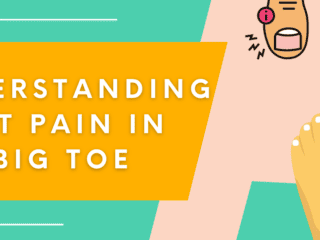Hand, foot, and mouth disease can be contracted by adults, though it’s more common in children under five. The disease is contagious, so adults may pick it up from their infected children.Â
But hand, foot, and mouth in adults rarely present with symptoms, so they may spread the virus to others without even knowing that they have it.
Symptoms of Hand, Foot And Mouth In Adults
Although symptoms aren’t often seen in adults, when you do experience some of the following, there’s a strong indication that you might be infected. We have broken down the specific stages of Hand, Foot, And Mouth Disease here.
Fever And Flu-Like Symptoms
From three to six days after catching the virus, adults may present with a fever and show flu-like symptoms. These symptoms can include a sore throat, decreased appetite, and drinking less potentially leading to dehydration.
Mouth Sores
Following the onset of fever, you may develop sores in your mouth ranging from uncomfortable to painful. These start as small red spots in your throat, under your tongue, or inside your cheeks.
When the sores blister, they become painful.
Skin Rash
A rash can develop on the palms of your hand, the soles of your feet, on your knees, elbows, buttocks, and genitals.Â
The rash usually presents as small, flat red spots that sometimes blister. Keep in mind that the fluid inside the blisters and the resulting scabs may contain the virus. So it can be spread even after your symptoms start to improve.
What Causes Hand, Foot And Mouth In Adults
Hand, foot, and mouth disease is usually caused by one of two viruses: coxsackievirus a16 and enterovirus 71.
Coxsackievirus a16 is the most common cause of this disease in the United States, with enterovirus 71 being the more common cause in East and Southeast Asia.
The virus is spread orally or through contact with an infected person. It can be contracted through droplets sprayed by sneezing, coughing, the fluid in blisters, through feces, or by touching a surface that has the virus on it.
You can also pick up the disease from infected water, such as a swimming pool.
The Hand, Foot, And Mouth Timeline
This is how hand, foot, and mouth disease progresses in both adults and children:
- Days three to six: fever is usually the first sign, followed by a sore throat, decreased appetite, and feeling unwell.
- A day or two after the initial fever, painful sores may begin to develop in the front of the mouth and throat.Â
- This is followed in a day or two by a rash on the hand, feet, and sometimes the buttocks.
How To Treat Hand, Foot And Mouth In Adults
There is no cure for hand, foot, and mouth in adults, and it usually goes away on its own within seven to ten days.
You can, however, treat the symptoms in the following ways:
- Get over-the-counter pain and fever relievers like Ibuprofen and acetaminophen, or use a mouth-numbing spray for painful ulcers.
- Use anti-itch lotions like calamine for itchy spots and rashes.
- Stay hydrated and drink or eat cold goods like ice pops, soothing yogurt, or smoothies. This helps to get some nutrition back into your body when you suffer from a loss of appetite; while soothing a sore throat. Avoid juices and sodas that may irritate your mouth and throat through acidity and fizziness.
Complications
Although rare, there are some complications that you may come up against when you have hand, foot, and mouth disease.
- Dehydration can occur if the pain from mouth and throat ulcers makes it difficult to swallow.
- Loss of fingernails or toenails.
- The brain can swell (encephalitis).
- Heart muscles can swell (myocarditis).
- The membranes around the brain and spinal cord can swell up (viral meningitis).
- In severe cases, it can lead to paralysis.
When To See A Doctor
If your symptoms don’t improve within seven to ten days, contact your physician. People with a weakened immune system should talk to their doctor if they start to get sores on their hands, feet, or elsewhere on their bodies.
What To Expect At The Doctor’s Office
If you’ve reached the stage where you need to see your physician, this is what you can expect them to test:
- Physical examination of rashes and/or sores around your hand, feet, and mouth.Â
- Questioning you on any symptoms you have experienced.
- Taking a swab from the throat or nose, or sending a stool sample to the lab for testing.
Hand, Foot And Mouth In Pregnancy
There isn’t usually a risk for either the baby or mother in pregnancy. However, pregnant women should let their physician know if they are presenting with any of the hand, foot, and mouth symptoms.
This is because a high temperature in the first three months of pregnancy can lead to a miscarriage, although this is rare. Also, if a pregnant woman gets hand, foot, and mouth disease shortly before giving birth, the baby may be born with a mild version of the disease.
Final Thoughts
Hand, foot, and mouth in adults is no more dangerous than it is in children. And even in kids, it’s generally a condition that clears up quickly and on its own.
Maintaining proper hygiene in public places where you may potentially come into contact with hand, foot, and mouth disease – like public swimming pools, public toilets, etc – can help you avoid catching the virus.







